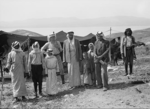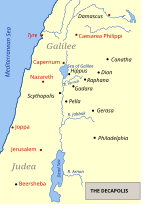Ein Gev
1937 establishments in Mandatory PalestineAustrian-Jewish culture in IsraelCzech-Jewish culture in IsraelEmek HaYarden Regional CouncilGerman-Jewish culture in Israel ... and 12 more
Jewish villages in Mandatory PalestineKebaran cultureKibbutz MovementKibbutzimLatvian-Jewish culture in IsraelLithuanian-Jewish culture in IsraelNatufian sitesPopulated places established in 1937Populated places in Northern District (Israel)Sea of GalileeSlovak-Jewish culture in IsraelTourist attractions in the Golan Heights

Ein Gev (Hebrew: עֵין גֵּב) is a kibbutz in northern Israel. Located on the eastern shore of the Sea of Galilee near the ruins of the Greco-Roman settlement of Hippos, it falls under the jurisdiction of Emek HaYarden Regional Council. In 2022 its population was 666.
Excerpt from the Wikipedia article Ein Gev (License: CC BY-SA 3.0, Authors, Images).Ein Gev
92, Emek HaYarden Regional Council
Geographical coordinates (GPS) Address Nearby Places Show on map
Geographical coordinates (GPS)
| Latitude | Longitude |
|---|---|
| N 32.782777777778 ° | E 35.639722222222 ° |
Address
92
Emek HaYarden Regional Council
North District, Israel
Open on Google Maps







